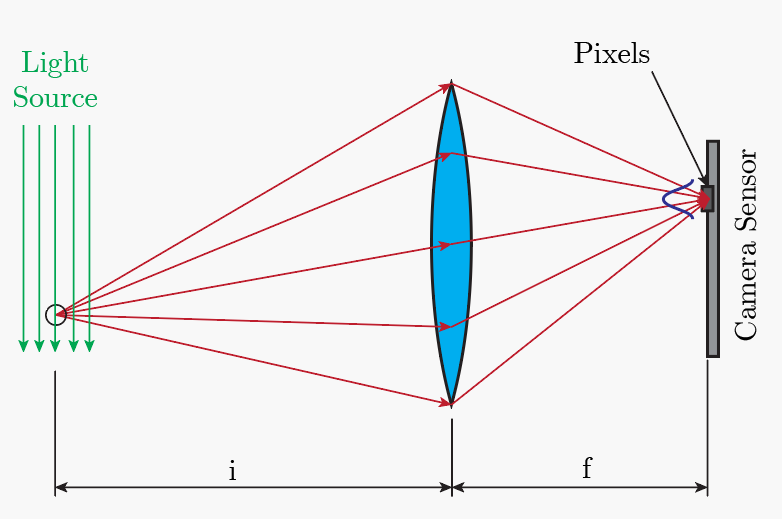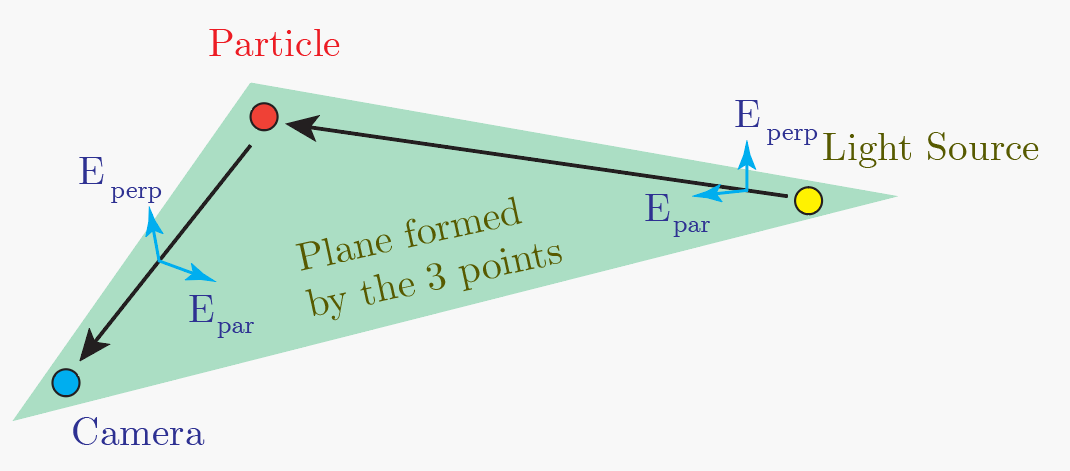| Saturation Photons Calculation - Known Camera ISO | |
| ISO Film Speed or EI (S) | |
| Exposure for 18% gray (H18) [lux-s] | |
| Exposure for 100% gray (H100) [lux-s] | |
| Wavelength (λ) [nm] | |
| Photon energy (εph) [J] | |
| Photopic luminous efficiency V(λ) | |
| Saturation exposure energy per pixel (h100,e) [J] | |
| Saturation exposure energy per pixel (h100,ph) [photons] |
| Saturation Photons Calculation - Known Quantum Efficiency | |
| Wavelength (λ) [nm] | |
| Photon energy (εph) [J] | |
| Sensor quantum efficiency [%] | |
| Saturation electrons | |
| Saturation exposure energy per pixel (h100,e) [J] | |
| Saturation exposure energy per pixel (h100,ph) [photons] |
| Saturation Photons Inputted Directly | |
| Wavelength (λ) [nm] | |
| Photon energy (εph) [J] | |
| Saturation exposure energy per pixel (h100,ph) [photons] | |
| Saturation exposure energy per pixel (h100,e) [J] |
| Camera Optics Setup | |
| Pixel size (wpx) [μm] | |
| Lens focal distance (f) [mm] | |
| Distance from particle to lens (i) [mm] | |
| Lens f-number (N) | |
| Gaussian particle image std. dev. [px] | |
| Camera view angle (0deg=looking at laser) | |
| Illumination Parameters | |
| Laser pulse energy (Qlaser) [J] | |
| Laser pulse time (t) [ns] | |
| Laser beam width (wbeam) [mm] | |
| Laser beam length (lbeam) [mm] | |
| Laser irradiance (Elaser) [W/m2] | |
| Particle Radius (r) [μm] | |
| Particle IOR, real part (nRe) | |
| Particle IOR, imaginary part (nIm) | |
| Medium IOR (nmedium, Re) | |
| Radiant flux emitted by particle (Φe) [W] | |
| Photons/pixel at the camera, perp. [photons] | |
| Photons/pixel at the camera, par. [photons] |
 |
| |
